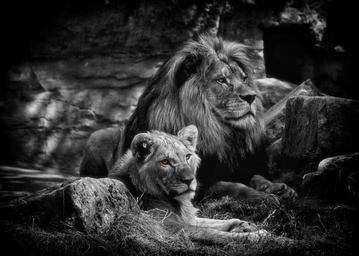Introduction
In an era where self-expression has taken on new meanings, aesthetic self portrait photography stands as a powerful medium for individuals to convey their emotions, thoughts, and identities. Through a blend of creativity, technical skill, and personal vision, photographers can create contemplative photos that resonate with viewers on multiple levels. This article dives deep into the intricate world of aesthetic self-portrait photography—unpacking its essentials, exploring techniques, and offering insights that can elevate your own photographic practice.

What is Aesthetic Self Portrait Photography?
Aesthetic self-portrait photography is not merely about taking a picture of oneself; it’s an art form that transcends traditional portraiture. It combines elements of fine art photography with personal narrative to produce images that are visually striking and deeply meaningful.
The Definition Explained
To put it simply, aesthetic self-portrait photography is defined as the practice where individuals use their own likeness as a primary subject while incorporating artistic elements that reflect their inner world or external environment. This kind of photography often emphasizes mood, color schemes, and composition to evoke feelings in the viewer.
Understanding the Elements of Aesthetic Self Portrait Photography
When discussing understanding the elements of aesthetic self portrait photography, one must consider various aspects such as lighting, composition, background choice, and emotional expression. Each component plays a significant role in creating an impactful image.
The Role of Lighting in Portrait Photography
Lighting is arguably one of the most critical components in any form of photography. Natural light can create soft shadows and highlight features beautifully. In contrast, artificial lighting provides a range of effects depending on https://www.oskuleinonenphotography.com/Traces-and-Stories/Self-Portrait-Photos/i-MG758JQ its intensity and direction.
- Natural Light: Using sunlight during different times of day can yield varying results. Artificial Light: Studio lights or lamps can help achieve specific moods.
Composition Techniques for Stunning Aesthetics
Composition refers to how elements within the frame are arranged. For aesthetic self portraits:
Rule of Thirds: Dividing your frame into thirds helps create balance. Leading Lines: Use natural lines in your environment to draw attention. Framing: Surrounding your subject with elements adds depth.Creating Contemplative Photos through Self-Portraiture
Self-portraiture invites introspection—both for the photographer and the audience. The term "contemplative photography" relates closely here; it's about capturing moments that provoke thought rather than just showcasing beauty.
Exploring Themes in Contemplative Photography
When considering themes for your contemplative photos:
Isolation vs Connection: Reflect on the nuances between being alone and feeling connected. Joy vs Sorrow: Capturing both ends of this emotional spectrum can provide depth. Nature vs Urban Life: Choose backgrounds that reflect your personal journey.Aesthetic Photos Wall: Curating Your Space
Once you've created stunning images, how do you display them? An aesthetic photos wall can serve as both decor and conversation starter in your home.
How to Hang a Large Canvas Effectively
When displaying large canvases:
- Choose a Focal Point: Make sure it draws attention when entering the room. Spacing Matters: Keep even spaces between frames for cohesion.
Rare Home Interior Pictures as Artistic Statements
Incorporating rare home interior pictures alongside your self-portraits can enhance visual storytelling by adding context or juxtaposition to your themes.
Different Styles within Aesthetic Self Portrait Photography
Aesthetic self portraits come in various styles—each with its unique flair and approach.
Abstract Self Portrait Photography
This style focuses less on literal representation and more on concepts or feelings conveyed through colors, shapes, or textures.
Faceless Self Portrait Ideas
Exploring faceless portraits allows photographers to emphasize mood without relying solely on facial expressions; hands, back views, or silhouettes become focal points instead.
The Influence of Color in Aesthetic Portraits
Color theory plays a crucial role in eliciting emotion from viewers—warm colors may evoke happiness while cool colors might inspire calmness.
Aesthetic Colorful Portrait Photography
Using vibrant palettes transforms ordinary portraits into eye-catching masterpieces that linger in memory long after viewing them.
Art Photographers Who Inspire Aesthetic Self-Portraits
Studying notable art photographers can provide invaluable insights into techniques and philosophies behind effective self-portraiture:
Cindy Sherman: Known for her conceptual work reflecting identity. Francesca Woodman: Explores themes of femininity through haunting imagery.The Impact of Social Media on Self-Portrait Trends
Platforms like Instagram have revolutionized how we perceive aesthetics today—the quest for likes has led many photographers toward hyper-stylization at times sacrificing authenticity.
Hashtags That Enhance Visibility
Using relevant hashtags such as #selfieart or #aestheticallypleasingimages will increase visibility among niche audiences interested in art photography.
6 Frequently Asked Questions (FAQs)
1. What defines aesthetic self portrait photography?
Aesthetic self portrait photography combines artistic expression with personal narrative using one’s own likeness as the subject while focusing on visual elements like color and mood.
2. How do I choose a theme for my self portraits?
Consider what resonates personally—whether it’s isolation versus connection or joy versus sorrow—and reflect these themes through settings and expressions you capture.
3. What equipment do I need for aesthetic self portraits?
Begin with what you have! A smartphone camera works wonders; however, DSLRs offer greater control over settings like aperture and focus if you're looking for professional results.

4. Can I edit my photos after taking them?
Absolutely! Post-processing tools like Adobe Lightroom or Photoshop allow you to enhance colors, contrast levels & remove distractions from your compositions effectively.
5. How can I improve my composition skills?
Practice makes perfect! Study other photographers’ work while experimenting with different techniques such as leading lines or symmetrical framing until they feel intuitive during shoots themselves!
6. What should I consider when choosing a location?
Reflect upon how each setting aligns with themes explored within images captured—the ambiance creates emotional impact!
Conclusion
Understanding the intricacies involved in creating aesthetic self portrait photography opens doors not only to artistic exploration but also profound self-discovery. Each photograph encapsulates moments that speak volumes about individual experiences while inviting others into those narratives—a beautiful amalgamation indeed! Whether you’re drawn towards colorful abstractions or contemplative candid shots—embracing these elements allows every click to tell stories worth sharing across walls adorned by our lives captured through lenses ever so carefully focused upon ourselves!